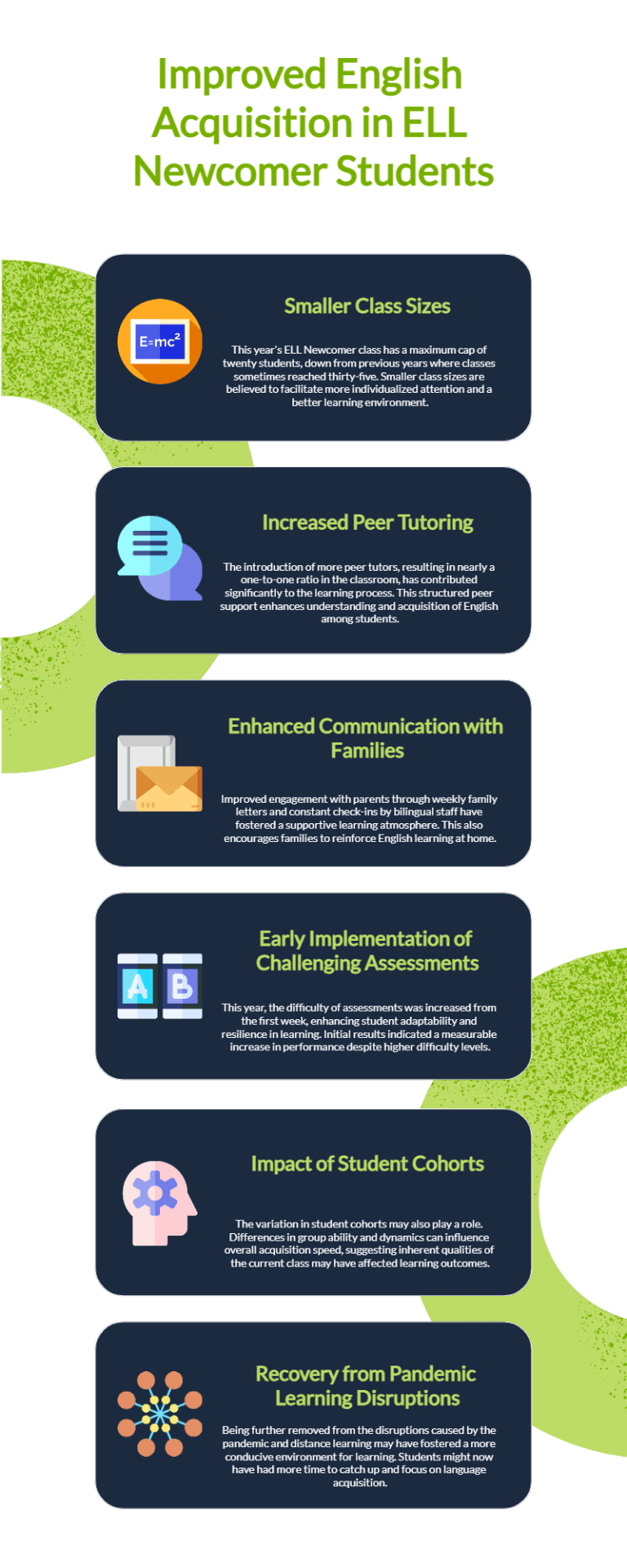
ΛΖΞ / Pixabay
It’s six weeks into our school year and, though I’m much more into being data-informed than being data-driven, data seems to suggest that my ELL Newcomer students this year are acquiring English considerably faster than some of my past classes.
The content of my classes over the past few years has been pretty consistent, as have been my weekly Friday formative assessments. Usually, I increase the difficulty of those assessments about mid-way into the year by adding a page’s worth of “sentence scrambles.” This year, though, I decided to not wait to make that change, and made that addition to the assessments from day one.
The first week’s assessment results for this year’s class was a bit worse than last year’s scores, which would be expected since last year’s test did not include the extra page of sentence scrambles.
However, starting in the second week, the scores for this year’s students were typically at least twenty percent higher or more than last year’s students – even with this year’s assessments being substantially more difficult than the assessments from a year ago.
So, if the content is the same, and the assessments are more difficult, what could be behind these positive results?
Here are the variables – the differences between this year and last year:
- Our union negotiated a hard “cap” on the class size for ELL Newcomer and Intermediate classes. They can now not exceed twenty. It’s crazy to even think about how big some of my previous classes have been. Last year, it fluctuated between thirty-and-thirty-five.
- We increased the number of peer tutors in my class. Now it’s almost a one-to-one ratio (last year it one-to-four).
- We ramped up communication with parents/guardians last year, and have put it on “steroids” this year. Students write a weekly family letter, and our extraordinarily talented bilingual aide checks in with families constantly, including to remind them that their child should be working on their computer studying English at least one-half hour each night.
- Of course, another simple explanation for the change could be that this is just a different group of students who, by luck of the draw, tend to be able to acquire English than their previous cohort.
- This year is another year removed from the peak of the epidemic and distance learning, though in some of their home countries there might not have been any learning going on at that time at all. They’ve had an additional year to try to catch-up.
Though I did similar assessments in earlier years, I only digitized and saved the results from last year, so I can’t compare beyond the past two years. It seems to me, though, that student progress this year in my class is generally faster than in most past years.
My suspicion is that the positive change is tied – to differing extents – to all of them. I’m just not sure there’s a way to figure out which ones had the greatest impacts.
What do you think?
Here’s an infographic about this post I made with Infography:





Recent Comments